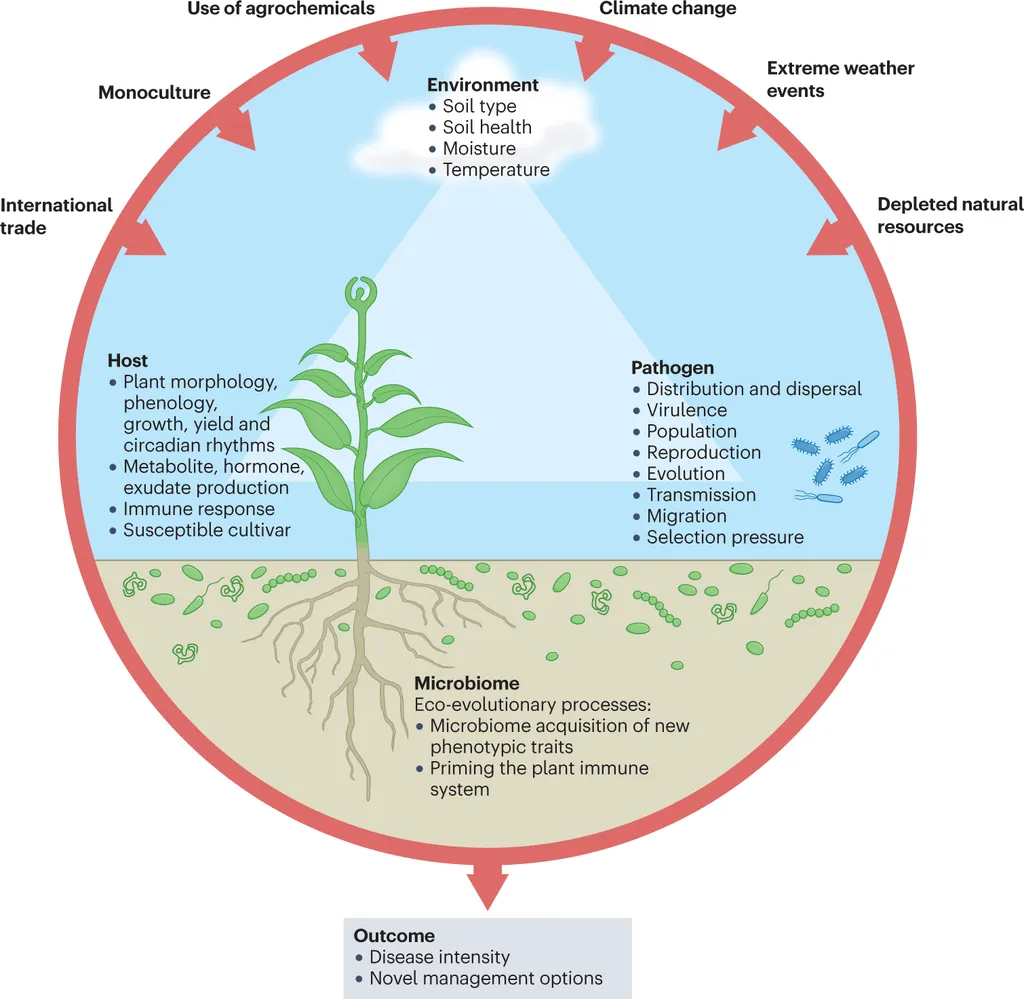In a world where climate change is reshaping ecosystems and agricultural landscapes, understanding the future distribution of plant pathogens is becoming increasingly critical. A recent study published in the journal *Geomatics, Natural Hazards & Risk* (translated from Arabic as “Geomatics, Natural Hazards & Risk”) sheds light on the potential future spread of fire blight, a devastating disease caused by the bacterium *Erwinia amylovora*. This research, led by Jawaher Ibrahim Alahadeb from the Department of Biology at Majmaah University in Saudi Arabia, uses advanced geographic information systems (GIS) and species distribution modeling to predict how climate change might alter the pathogen’s range, with significant implications for the agricultural sector.
Fire blight is a major threat to pome fruits like apples and pears, as well as other Rosaceae plants. The disease causes substantial economic losses globally, making it a priority for agricultural researchers and policymakers. Alahadeb’s study leverages data from the Global Biodiversity Information Facility (GBIF) and 19 bioclimatic variables from WorldClim to model the current and future distributions of *E. amylovora*. The research identifies six key bioclimatic variables—annual mean temperature, isothermality, mean temperature of the coldest quarter, annual precipitation, precipitation of the driest month, and precipitation of the warmest quarter—as critical factors influencing the pathogen’s spread.
Using the maximum entropy (MaxEnt) method, the study achieves high accuracy in predicting suitable areas for fire blight. “The model showed remarkable accuracy, with an AUC of 0.9 and a TSS of 0.75,” Alahadeb explains. “This gives us confidence in our predictions and underscores the importance of proactive management strategies.”
Current suitable areas for fire blight include temperate regions such as Europe, North America, and East Asia. However, the study’s projections for 2050 and 2070 under different climate change scenarios—specifically the Shared Socioeconomic Pathways (SSPs) 370 and 585—paint a complex picture. Some regions are expected to become more favorable for the pathogen due to warming temperatures, while others may become less suitable. “Temperature and precipitation patterns are key drivers of these changes,” Alahadeb notes. “Understanding these dynamics is crucial for developing targeted strategies to mitigate the spread of fire blight.”
The implications for the agricultural sector are profound. As climate change continues to alter global weather patterns, farmers and agricultural businesses must adapt to new risks. The study’s findings highlight the need for proactive measures in at-risk areas, such as improved disease monitoring, resistant crop varieties, and integrated pest management practices. “This research provides a roadmap for targeted strategies to combat fire blight under changing climates,” Alahadeb says. “It’s a call to action for the agricultural community to prepare for the challenges ahead.”
The study’s insights are particularly relevant for the energy sector, as agricultural productivity and food security are closely linked to energy use and sustainability. As the global population grows and climate change intensifies, the demand for efficient and sustainable agricultural practices will only increase. By understanding and mitigating the risks posed by pathogens like *E. amylovora*, the agricultural sector can contribute to a more resilient and sustainable future.
In conclusion, Alahadeb’s research offers a compelling example of how advanced technologies like GIS and species distribution modeling can be used to address real-world challenges. As climate change continues to reshape our world, such tools will become increasingly vital for predicting and managing agricultural risks. The study’s findings serve as a reminder of the importance of proactive planning and adaptation in the face of a changing climate.

